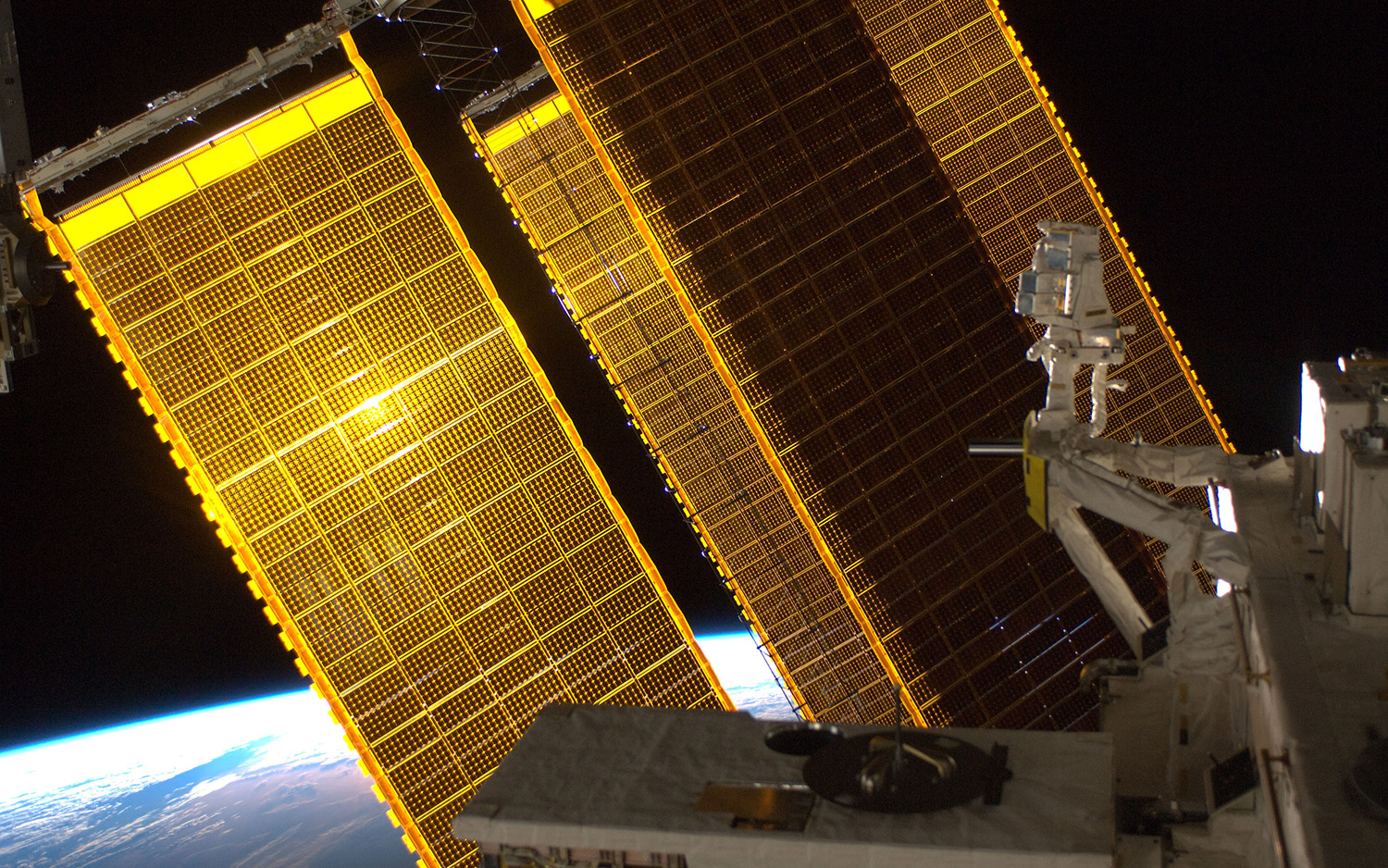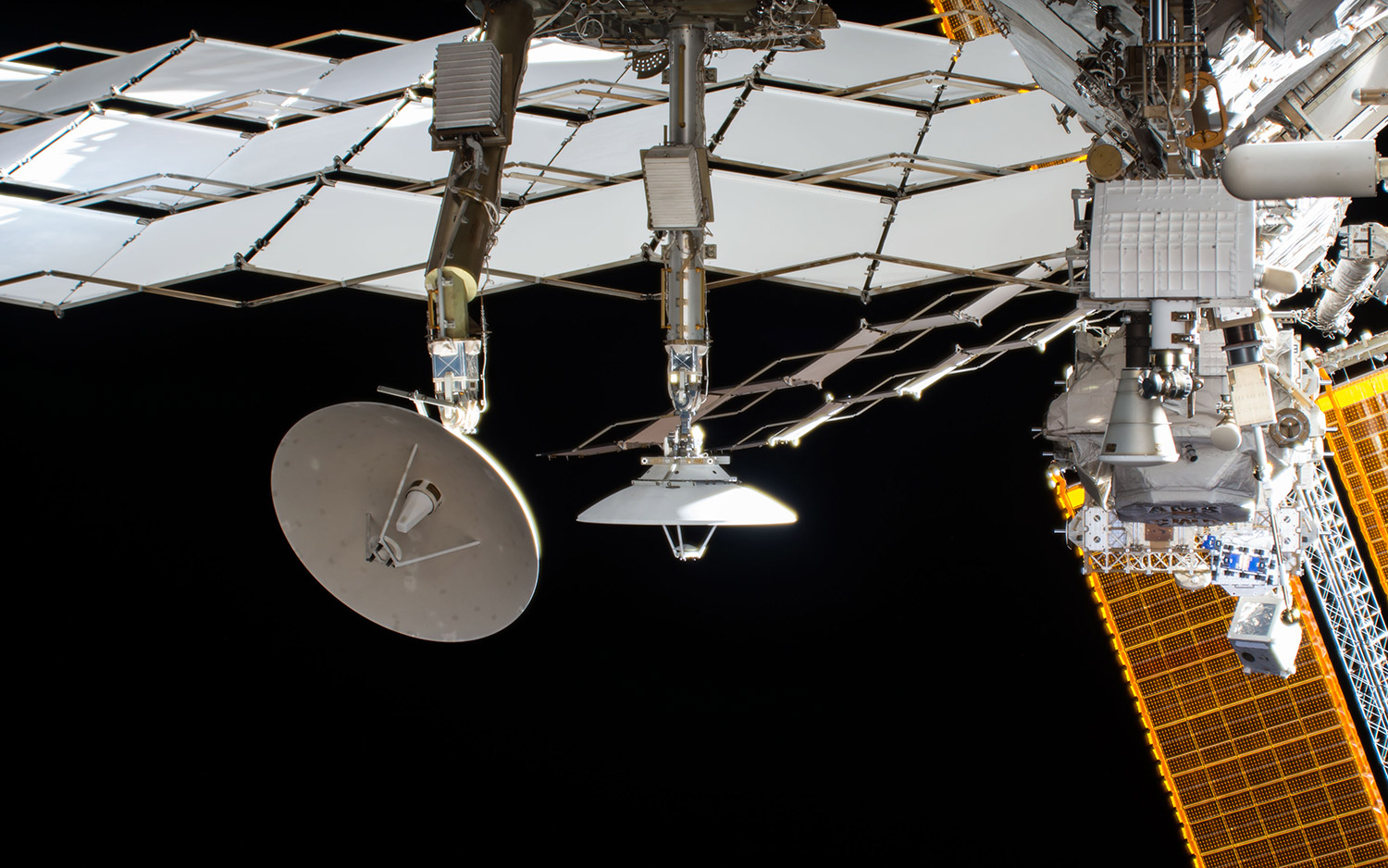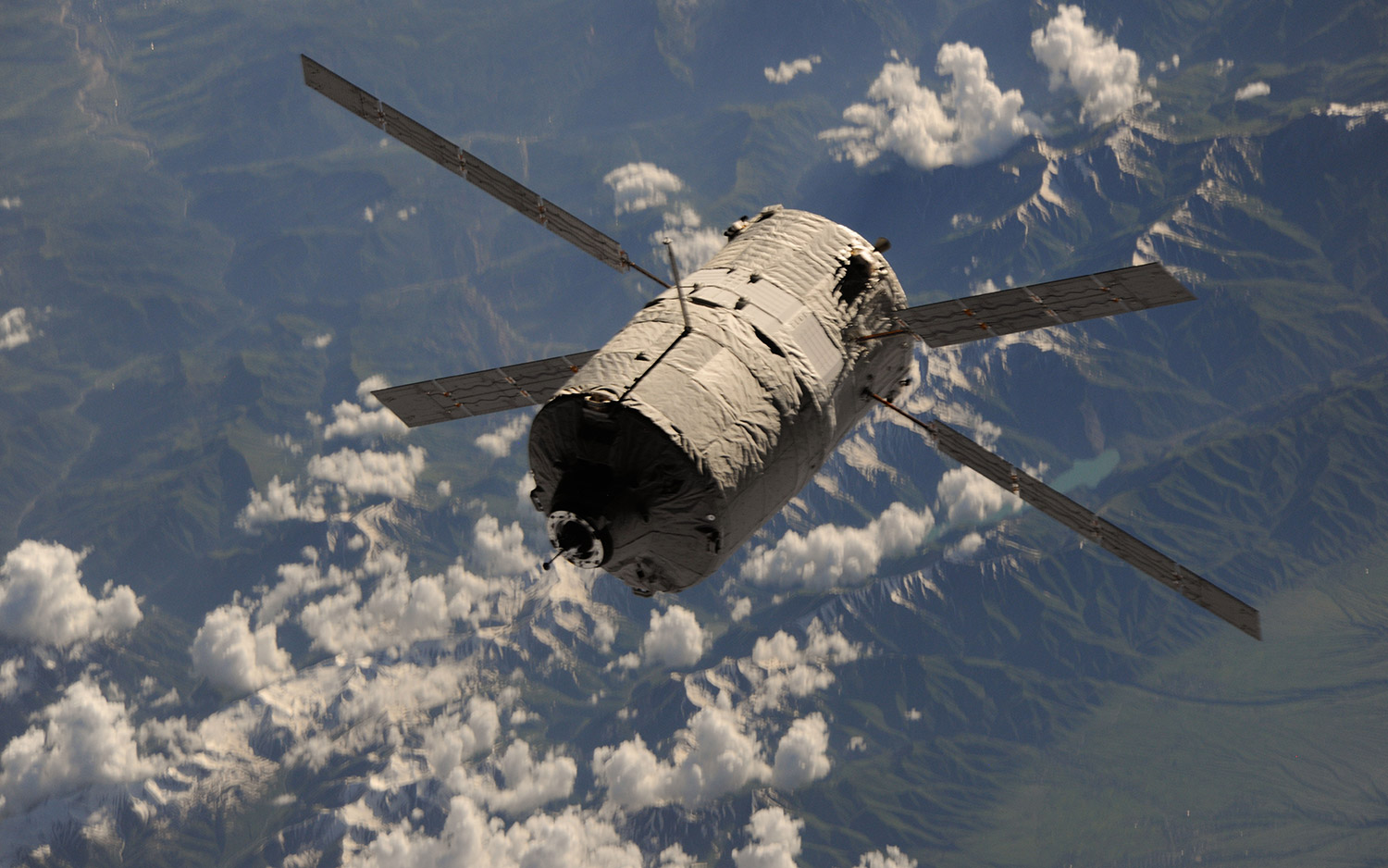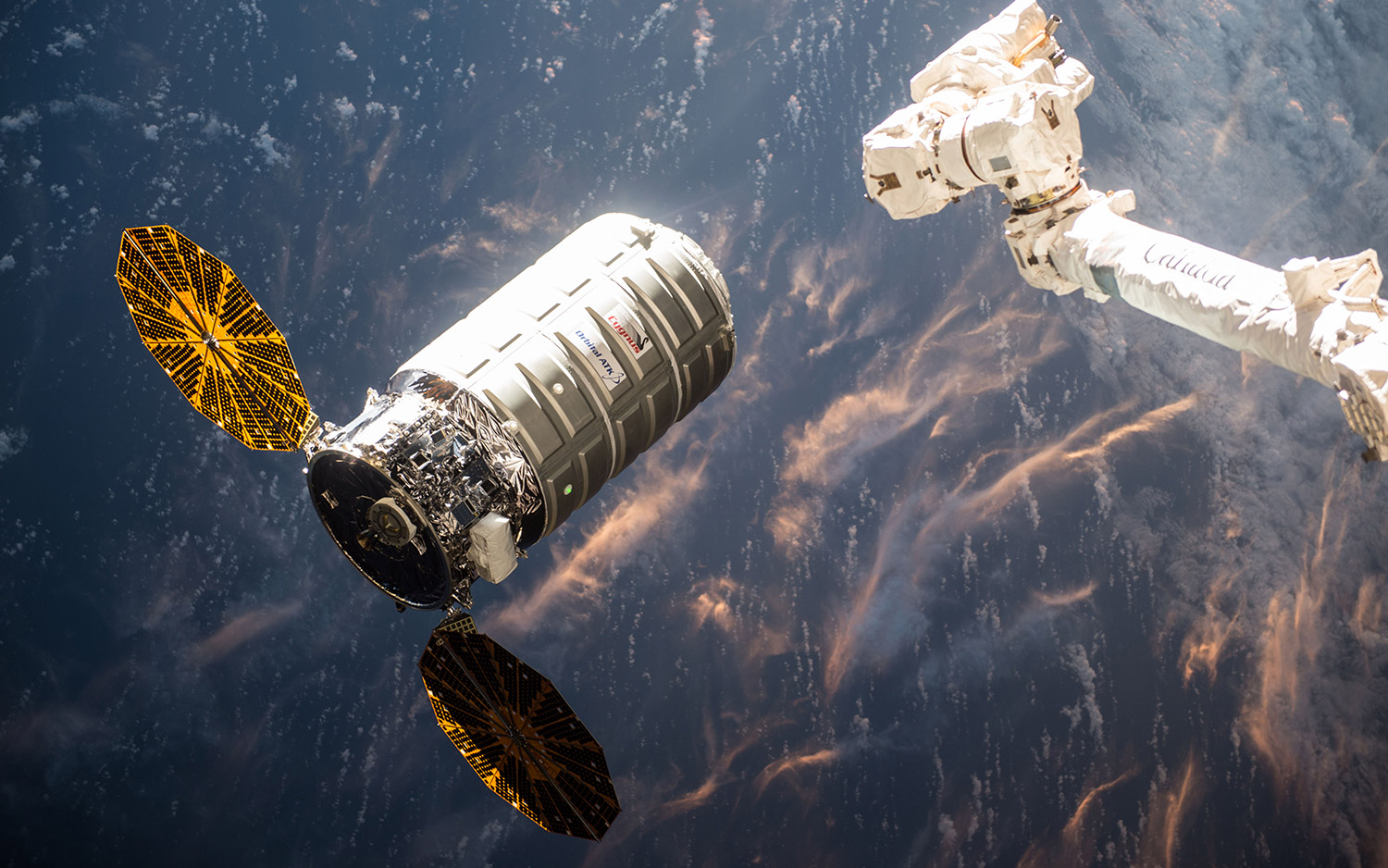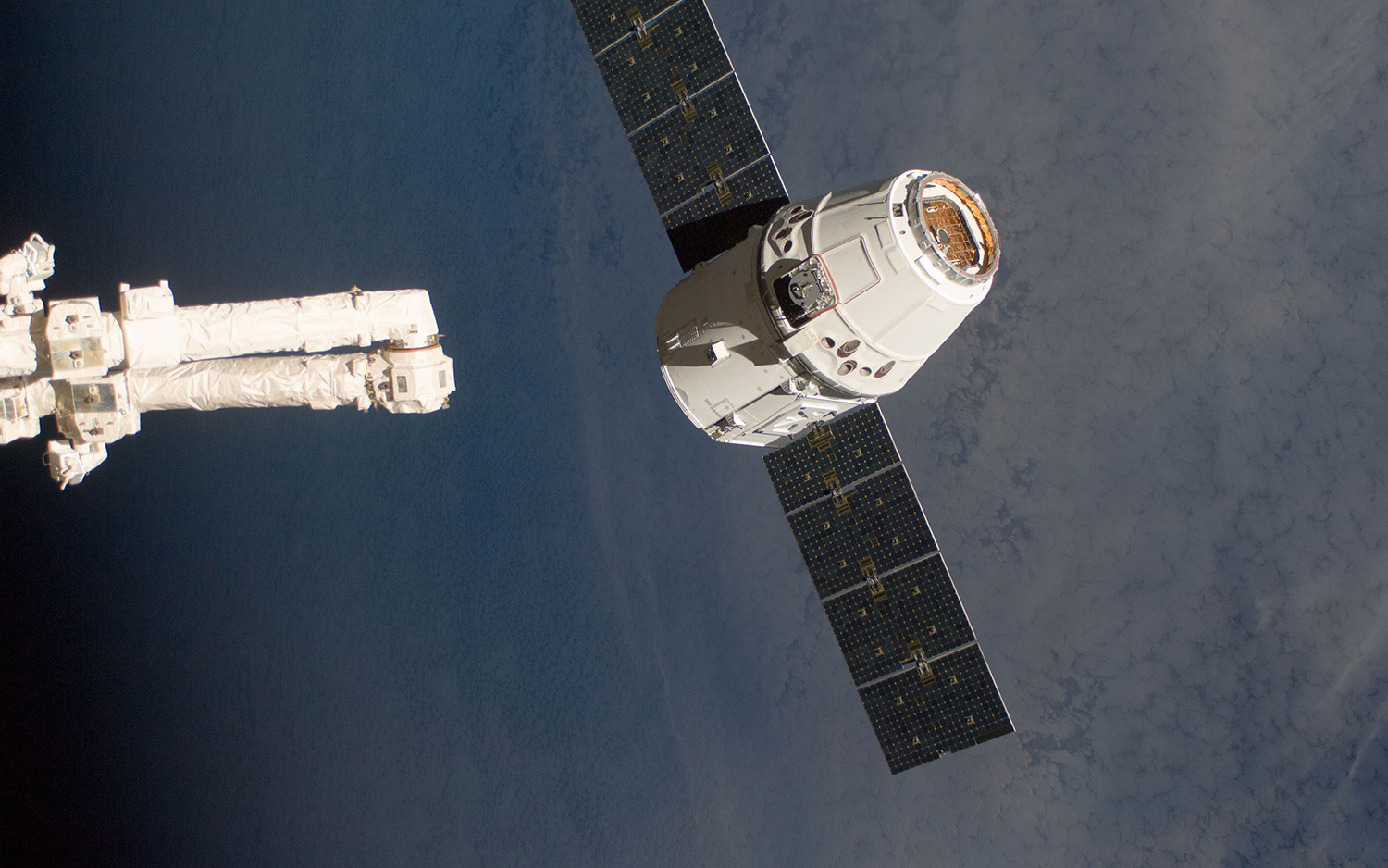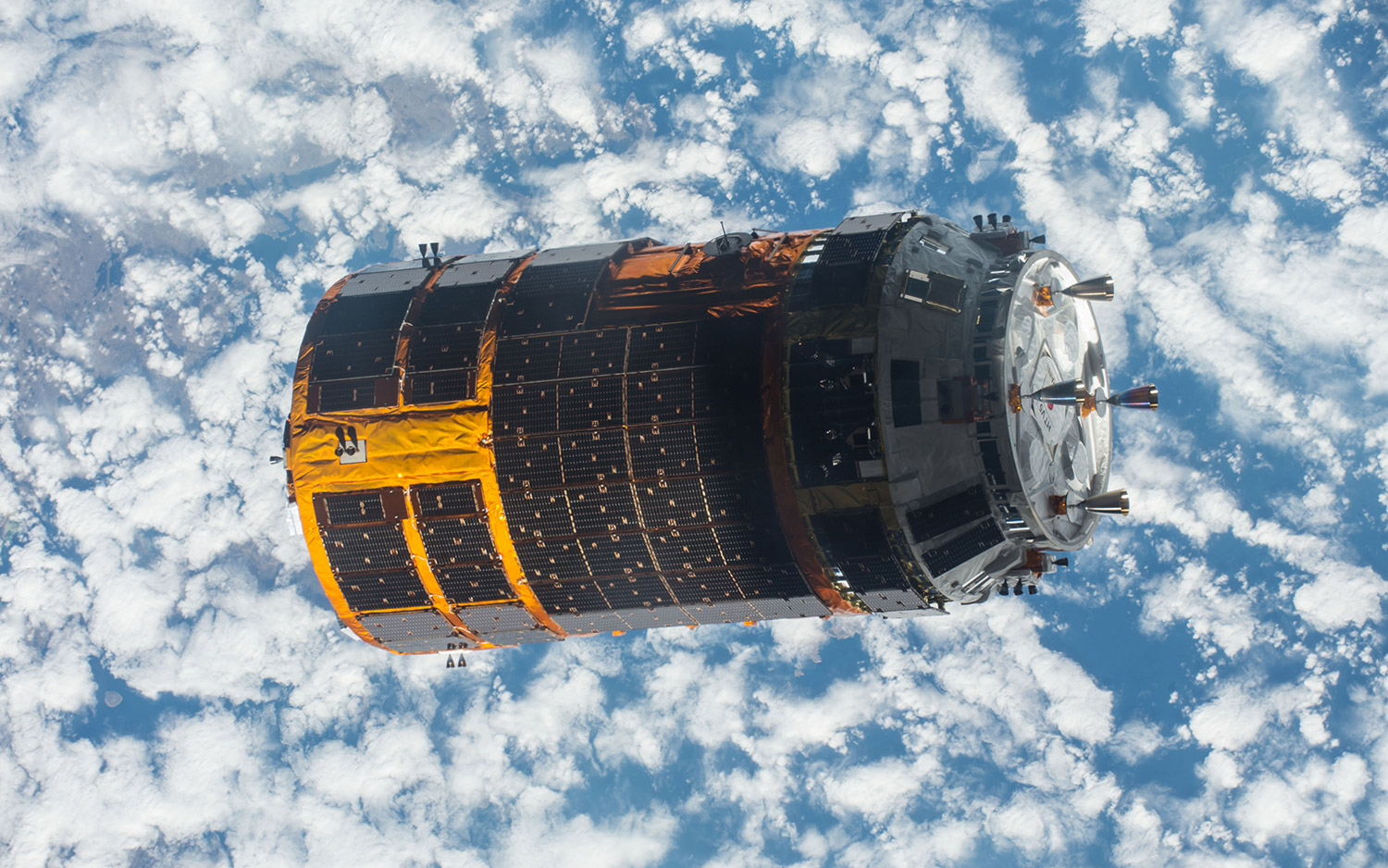International Space Station at 20: A Photo Tour
Integrated Truss Structure
The backbone of the space station is the Integrated Truss Structure, which is made up of 11 segments and a separate component called Z1, according to NASA. This is where all sorts of space station utilities are attached: solar arrays, thermal control radiators and external payloads. The truss also includes lines for electricity and cooling, and rails for the Mobile Base System used for the Canadian robotic systems Canadarm2 and Dextre. The truss elements were installed over several missions between October 2000 and March 2009.
Solar Arrays
The space station solar arrays use solar energy and conver them into electricity, using a process called photovoltaics, according to NASA. The arrays were brought to space on several space shuttle missions and installed by astronauts duirng spacewalks. In the space shuttle, the arrays were folded up like an accordion, and then were deployed after installation. The four array sets generate roughly 84 to 120 kilowatts of electricity, which is enough to power more than 40 houses. When the station is not in sunlight, power flows through batteries that store excess solar power.
Radiators
Radiators are also an important part of the space station, because they transfer heat from the station to outer space; this allows the station to maintain its temperature at an acceptable limit, according to NASA. The space station has a passive system including elements such as insulation, surface coatings and heat pipes. It also has an active system — radiators that have seven panels that can deploy when needed, to bleed excess heat into space. The radiators work in concert with an ammonia circulation system, which picks up heat from space station electronics and then sends the heat to the radiator panels. From there, the heat radiates into space.
Automated Transfer Vehicle
Other temporary (but essential) parts of the International Space Station include the various cargo ships that provide supplies and that take equipment and trash away from the space station. One of them, shown here, is the European Space Agency's Automated Transfer Vehicle series. Europe ran five ATV missions between 2008 and 2014, which not only provided cargo to the station, but also could boost the space station to a higher orbit, if required. The one shown here is ATV-4 "Albert Einstein", which docked with the space station on June 15, 2013.
Cygnus
NASA has also signed commercial cargo agreements with multiple companies to provide supplies for the space station. Among them is Northrop Grumman Innovation Systems' Cygnus spacecraft, developed under a (now defunct) company called Orbital Sciences Corp. The first Cygnus mission to berth with the space station did so on Sept. 18, 2013; commercial resupply service missions began the following year.
Dragon
Another commercial resupply ship is the SpaceX Dragon spacecraft, which became the first-ever non-government cargo ship to dock at the space station on May 25, 2012. SpaceX has continued to supply cargo ever since, and is now working on a human-rated version of Dragon that will bring astronauts to the space station as part of NASA's commercial crew program. The Dragon stands apart from other cargo services because it is designed to bring pressurized cargo back down to Earth, allowing for crew members to return blood samples and live animals from the space station.
HTV
Japan's H-II Transfer Vehicle (HTV) — also called Kounotori ("stork") — made its first cargo flight in September 2009, on a demonstration mission. Japan is still running supply flights to the space station as of 2018, and is even planning on a successor vehicle that could hold pressurized cargo.
Breaking space news, the latest updates on rocket launches, skywatching events and more!

Elizabeth Howell (she/her), Ph.D., was a staff writer in the spaceflight channel between 2022 and 2024 specializing in Canadian space news. She was contributing writer for Space.com for 10 years from 2012 to 2024. Elizabeth's reporting includes multiple exclusives with the White House, leading world coverage about a lost-and-found space tomato on the International Space Station, witnessing five human spaceflight launches on two continents, flying parabolic, working inside a spacesuit, and participating in a simulated Mars mission. Her latest book, "Why Am I Taller?" (ECW Press, 2022) is co-written with astronaut Dave Williams.

